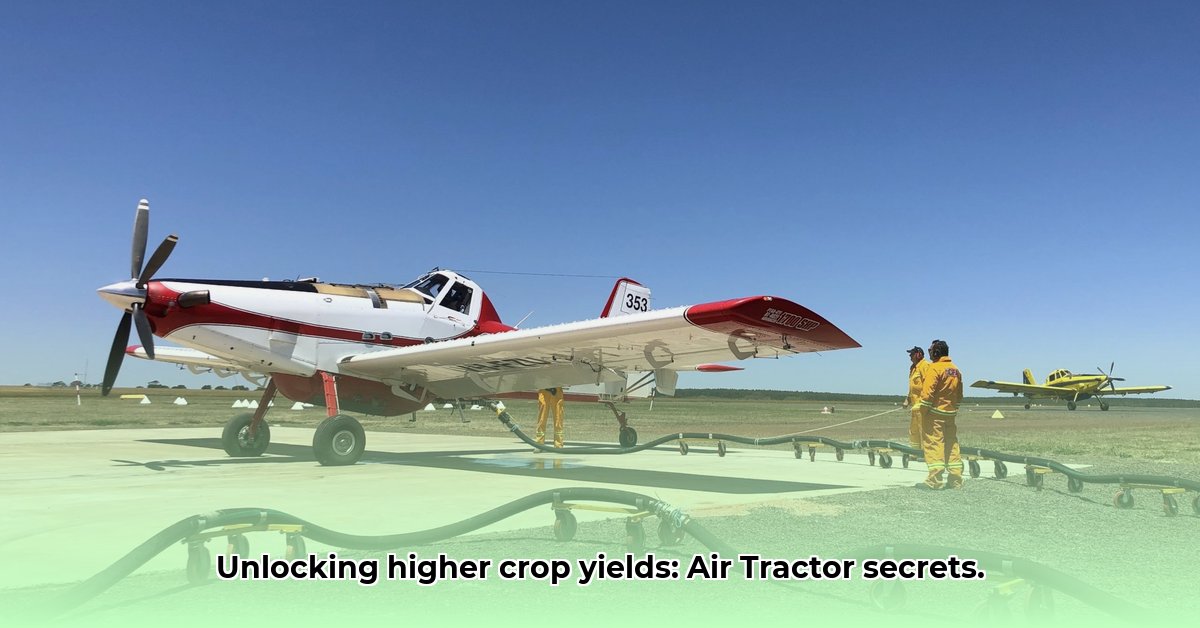
Understanding the Air Tractor AT-1002: A Technical Overview
The Air Tractor AT-1002 represents a significant advancement in agricultural aviation and wildfire suppression. Its primary advantage lies in its substantial payload capacity – a remarkable 10,800 pounds – allowing for significantly increased operational efficiency. This translates to covering larger areas in less time, a critical factor in both crop dusting and firefighting. But how does this translate to real-world cost savings? That's a question requiring further investigation. For more details, see the AT-1002 specs.
AT-1002: Strengths and Limitations
The AT-1002's impressive 1,060-gallon tank for fire retardant, coupled with its substantial payload for agricultural applications, highlights its versatile nature. This dual-use capability offers substantial year-round utility, maximizing its investment value. However, a critical data gap exists regarding its overall performance. How does its fuel efficiency compare to competitors? What are the long-term maintenance and operating costs? These are vital questions currently unanswered.
The 2022 Redesign: A Variable to Consider
Air Tractor's 2022 redesign introduces another layer of complexity. The specifics of these changes remain largely undisclosed, leaving stakeholders uncertain about their impact on performance and operational costs. Will these enhancements increase efficiency and longevity or introduce unforeseen issues? Only time and detailed, accessible data will provide the answers.
Market Impact and Adoption Rates: An Unclear Picture
The AT-1002's market penetration and replacement of older models remain unclear. A comprehensive market analysis is needed to determine its actual impact on the agricultural and firefighting sectors. How quickly are farmers and fire departments adopting this new technology? Are the projected economic benefits being realized? These are crucial questions that require in-depth investigation.
Actionable Insights for Key Stakeholders
The AT-1002's success hinges not only on its technological capabilities but also on readily available performance data and transparent communication. Here's a structured approach outlining immediate and long-term actions for various stakeholders:
1. Agricultural Businesses:
- Short-Term (0-1 year): Conduct a thorough cost-benefit analysis, factoring in both initial investment and projected operational expenses. Closely monitor the development and release of information regarding the 2022 redesign.
- Long-Term (3-5 years): After the redesign’s release and sufficient real-world data becomes available, reassess the aircraft's performance and consider leasing or purchasing based on comprehensive cost-effectiveness evaluations.
2. Firefighting Agencies:
- Short-Term (0-1 year): Assess the AT-1002's suitability for large-scale wildfire responses based on available operational data.
- Long-Term (3-5 years): Develop standardized operational procedures specific to the AT-1002 and explore inter-agency collaboration to maximize effectiveness and resource allocation.
3. Air Tractor and Competitors:
- Short-Term (0-1 year): Publish detailed and readily accessible performance data, including fuel efficiency, maintenance schedules, and operational costs. This transparency will build trust and facilitate informed decision-making across the industry.
- Long-Term (3-5 years): Focus on optimizing manufacturing processes for improved efficiency and exploring new technologies to enhance the AT-1002's capabilities. Engage in robust market analysis to understand customer needs and adjust strategies accordingly.
4. Regulatory Bodies:
- Short-Term (0-1 year): Closely monitor the AT-1002's safety record and thoroughly review the implications of the 2022 redesign on safety standards.
- Long-Term (3-5 years): Update safety regulations and certifications as needed to reflect technological advancements and ensure the safe operation of the aircraft.
Comparative Cost Analysis: Navigating the Data Gap
A comprehensive comparison of the AT-1002's operational costs with competitors requires a meticulous approach. Direct comparisons are hampered by the limited public availability of financial data and the variability of operational scenarios. The analysis necessitates a shift from simple cost metrics to a broader consideration of efficiency indicators like application rates and fuel consumption per treated acre.
Analyzing the total cost of ownership (TCO) – encompassing initial purchase price, ongoing maintenance, fuel, labor, insurance, and potential resale value – provides a more accurate long-term perspective. Consider these factors before making purchasing decisions:
- Fuel Consumption: Direct comparison requires accurate data on fuel burn per acre treated under various operational conditions.
- Maintenance: Regular maintenance, part replacement costs, and access to parts are essential components in assessing long-term operational expenses.
- Labor Costs: Pilot salaries, benefits, and associated insurance premiums must be factored into your calculations.
- Application Rates and Payload: Higher application rates and larger payloads can offset higher initial costs by reducing the number of passes required.
The lack of comprehensive public data highlights the need for independent testing and transparent reporting from both manufacturers and operators to facilitate informed decision making.
Conclusion: Transparency Drives Progress
The Air Tractor AT-1002 holds significant promise in agricultural aviation and wildfire suppression. However, its full potential can only be realized through greater transparency regarding its performance data. This information is vital not only for the manufacturers and operators but also for regulatory bodies and the industries relying on this technology. The future of efficient and sustainable agricultural and firefighting practices depends on it.